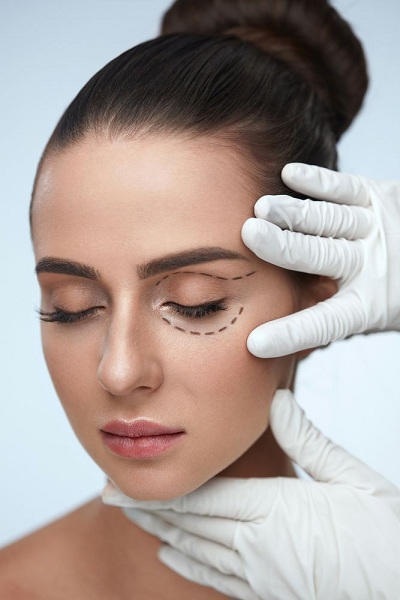Blepharoplasty

Overview
Eyelid surgery (technically called Blepharoplasty) is a procedure to remove fat usually along with excess skin and muscle from the upper and lower eyelids. Eyelid surgery can correct drooping eyelids and puffy bags below your eyes, features that make you look older and more tired up than you feel, and may even interfere with your vision. Blepharoplasty can be done alone or in conjunction with other facial surgery procedures such as a facelift or browlift.
Type of Anesthesia
- Upper Eyelid surgery can be performed under local anesthesia – which numbs the area around your eyes- along with oral or intravenous sedatives.
- If upper and lower eyelid surgery is to be performed, general anesthesia is desirable.
What to expect?
Some amount of swelling and bruising is expected, which starts decreasing after 2 days. You should be able to read or watch television after two days. However, you won’t be ready to wear contact lenses for about two weeks.
Post Operative Care
Most people feel ready to go out in public in a week. By then, you’ll probably be able to wear makeup to hide the bruising that remains. You may be sensitive to sunlight, wind, and other irritants for several weeks, so you should wear sunglasses and an individual sunblock made for eyelids when you go out.
Keep your activities to a minimum for three to five days, and to avoid more strenuous activities for about two weeks. It’s especially important to avoid activities that raise your blood pressure, including bending, lifting, and rigorous sports. You will also be told to avoid alcohol since it causes fluid retention.
Results
Healing is a gradual process, and your scars may remain as an imperceptible thin line incorporated in the lid creases. On the other hand, the positive results of your eyelid surgery-the more alert and youthful look-will last for years. After surgery, the upper eye lids no longer droop and the skin under the eyes is smooth and firm.
